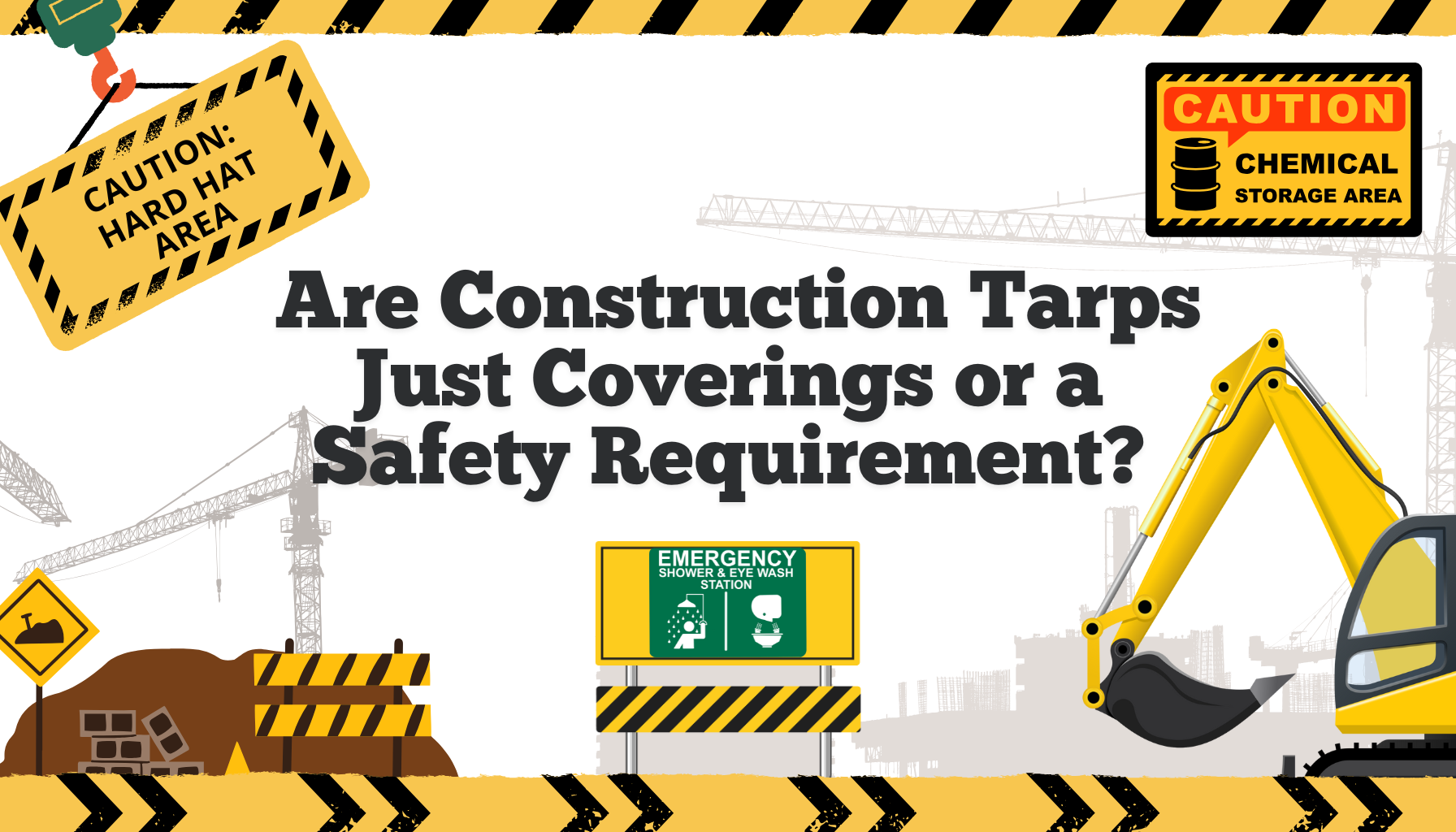When most people think of tarps on a construction site, they picture a quick fix for rain or a way to keep equipment dry. But in reality, tarps are doing much more than that. They can protect workers, prevent injuries, and even save lives.
So here’s the big question: are construction tarps actually covered by OSHA standards? The answer is yes, but not in the way you might think. There isn’t one single “tarp regulation.” Instead, tarps fall under several OSHA standards depending on how they’re being used.
OSHA Standards That Cover Construction Tarps
Debris Nets & Falling Objects (29 CFR 1926.251 & 1926.502)
If tarps or netting are being used to catch or contain debris, they need to meet strength requirements so falling material doesn’t hit workers or the public below.
Weather Protection & Enclosures (29 CFR 1926 Subpart E)
Temporary enclosures or weather tarps must be fire-retardant and securely fastened. If not, they can collapse or worse, become airborne hazards.
Fall Protection (29 CFR 1926.502(c))
Tarps are sometimes used alongside safety nets or guardrails. If that’s the case, they cannot interfere with the performance of the fall protection system.
Scaffolding (29 CFR 1926.451)
Tarps tied to scaffolding for weather shielding or dust containment must never reduce the scaffold’s load capacity or stability.
When Do You Actually Need Construction Tarps?
-
Debris Containment: Keeping tools, materials, and dust from falling and injuring workers or pedestrians.
-
Weather Protection: Shielding crews and equipment from wind, rain, snow, or intense sun while maintaining productivity and reducing risks.
-
Life Safety: Acting as debris nets under high-rises, bridges, or towers to stop falling material from striking people below.
Do Tarps Really Save Lives?
Absolutely.
-
Debris nets and tarps have stopped countless injuries from falling tools and materials.
-
Containment tarps reduce exposure to hazardous dust and chemicals.
-
Weather tarps keep crews safer in extreme conditions, helping prevent frostbite, heat illness, and slips.
When installed properly, tarps are not just a convenience. They are a critical piece of a site’s safety strategy.
Tip: Always check that tarps are rated for their intended use, flame-resistant if required, and securely anchored to handle wind and weather.















